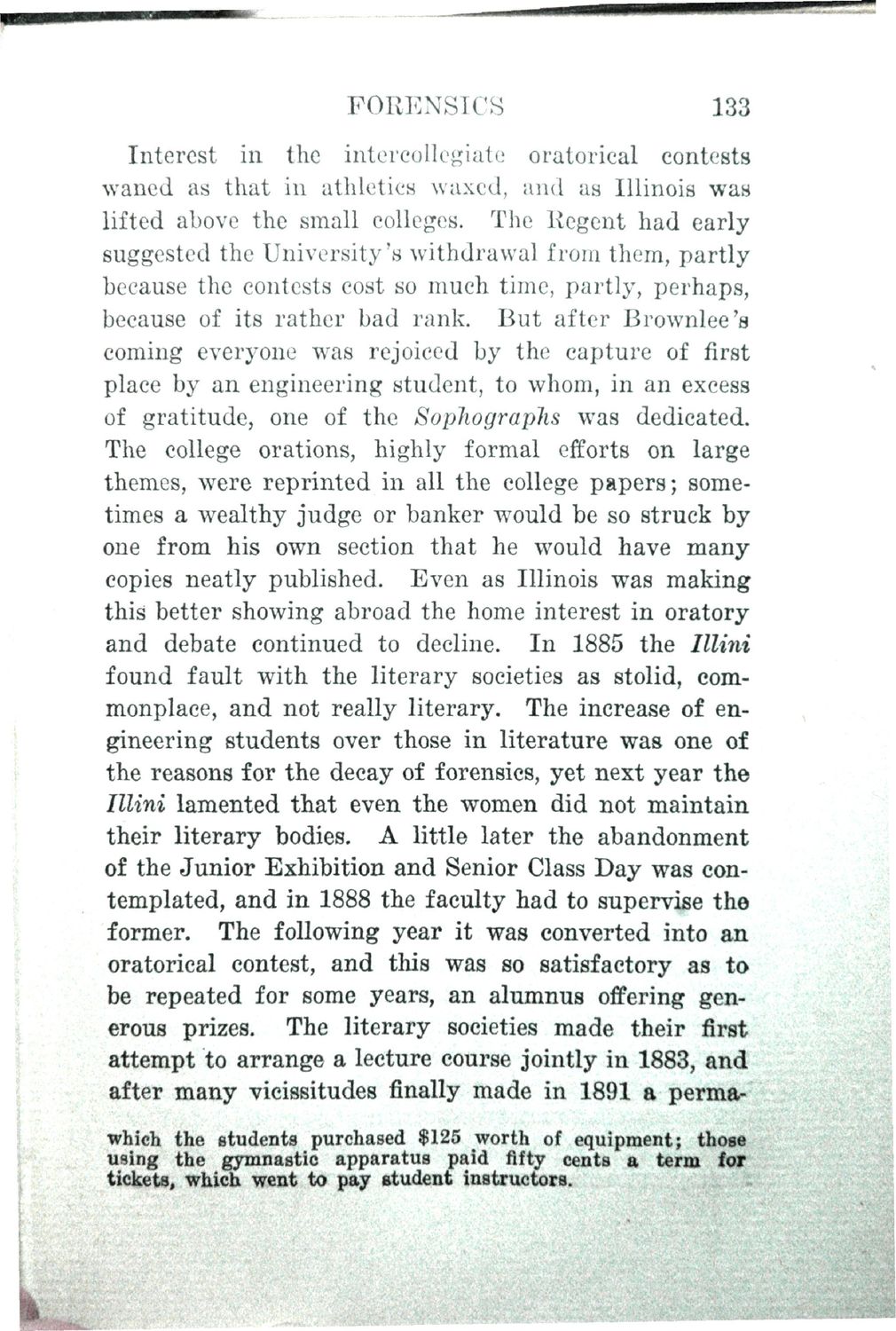| |
| |
Caption: Book - History of the University (Nevins)
This is a reduced-resolution page image for fast online browsing.

EXTRACTED TEXT FROM PAGE:
FOEENSICS 133 Interest in the intercollegiate oratorical contests waned as that in athletics waxed, and as Illinois was lifted above the small colleges. The Regent had early suggested the University's withdrawal from them, partly because the contests cost so much time, partly, perhaps, because of its rather bad rank. But after Brownlee's coming everyone was rejoiced by the capture of first place by an engineering student, to whom, in an excess of gratitude, one of the SopliograpTis was dedicated. The college orations, highly formal efforts on large themes, were reprinted in all the college papers; sometimes a wealthy judge or banker would be so struck by one from his own section that he would have many copies neatly published. Even as Illinois was making this better showing abroad the home interest in oratory and debate continued to decline. In 1885 the Illini found fault with the literary societies as stolid, commonplace, and not really literary. The increase of engineering students over those in literature was one of the reasons for the decay of forensics, yet next year the Tllini lamented that even the women did not maintain their literary bodies. A little later the abandonment of the Junior Exhibition and Senior Class Day was contemplated, and in 1888 the faculty had to supervise the former. The following year it was converted into an oratorical contest, and this was so satisfactory as to be repeated for some years, an alumnus offering generous prizes. The literary societies made their first attempt to arrange a lecture course jointly in 1883, and after many vicissitudes finally made in 1891 a permawhich the students purchased $125 worth of equipment; those using the gymnastic apparatus paid fifty cents a term for tickets, which went to pay student instructors.
| |